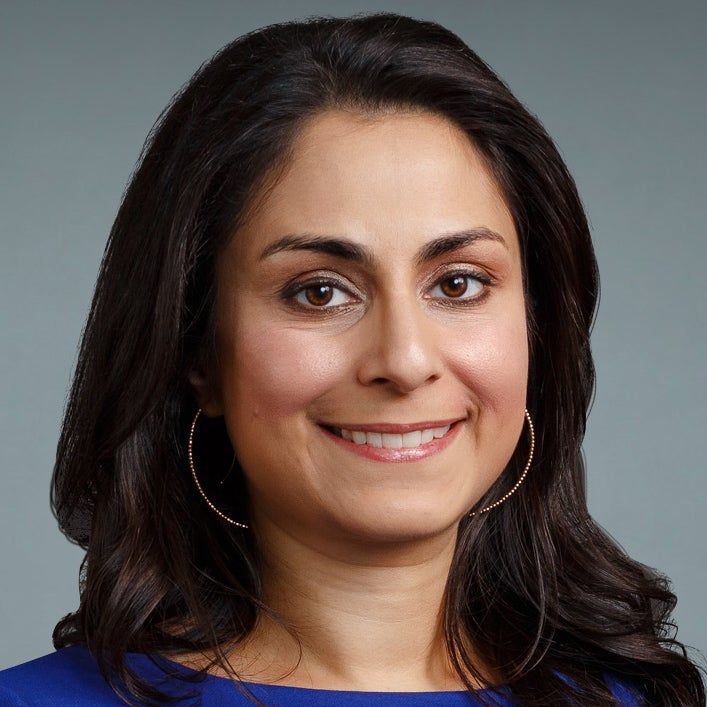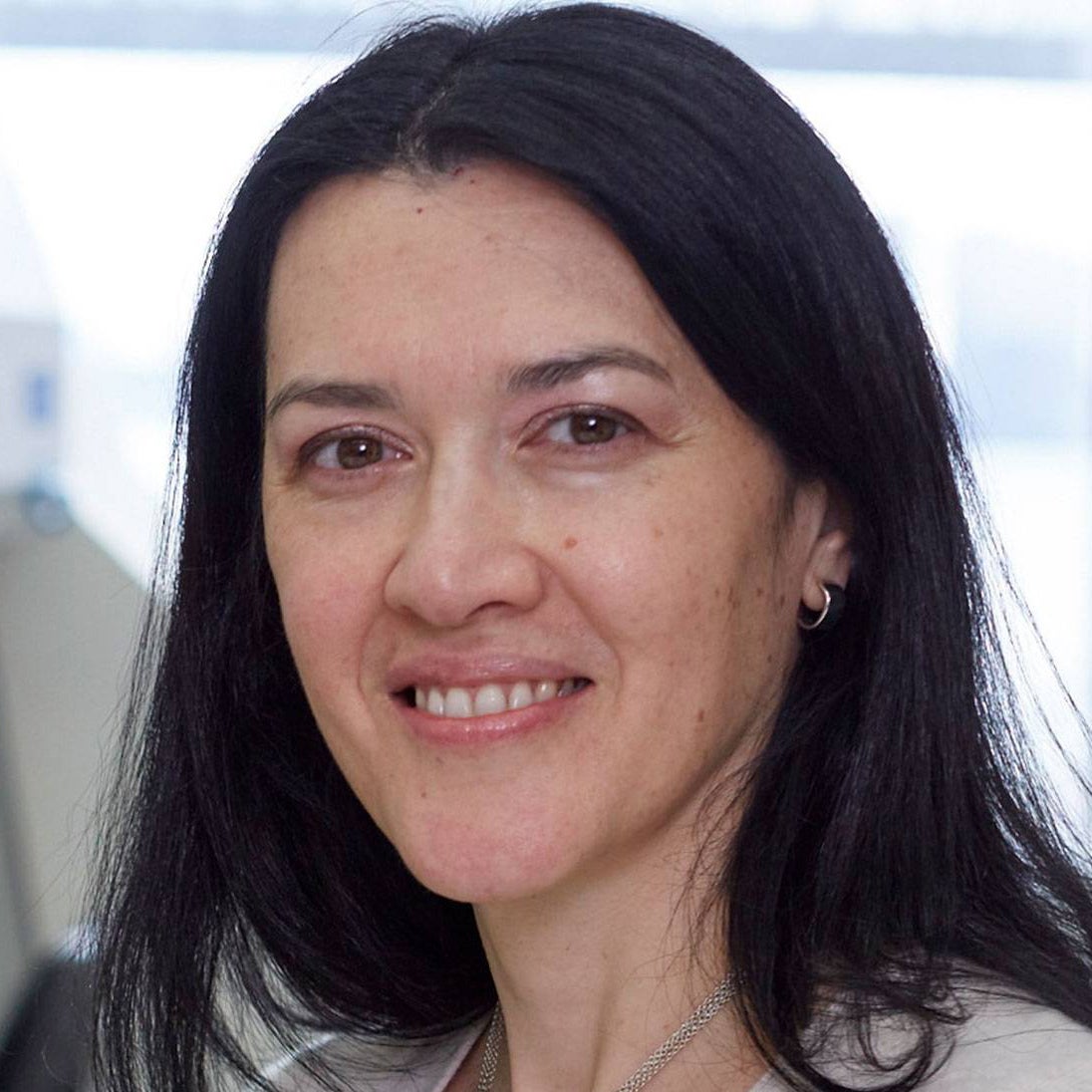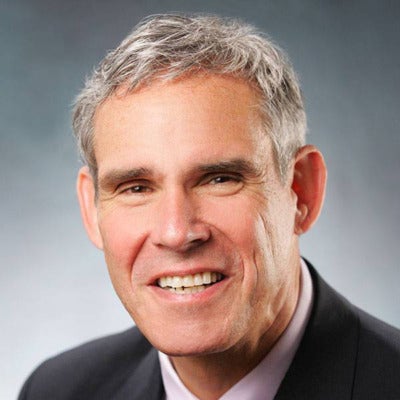Dec. 17th Event: The Latest on Omicron, Boosters, and Immunity
Kira Peikoff was the editor-in-chief of Leaps.org from 2017 to 2021. As a journalist, her work has appeared in The New York Times, Newsweek, Nautilus, Popular Mechanics, The New York Academy of Sciences, and other outlets. She is also the author of four suspense novels that explore controversial issues arising from scientific innovation: Living Proof, No Time to Die, Die Again Tomorrow, and Mother Knows Best. Peikoff holds a B.A. in Journalism from New York University and an M.S. in Bioethics from Columbia University. She lives in New Jersey with her husband and two young sons. Follow her on Twitter @KiraPeikoff.

The Omicron variant poses new uncertainty for the vaccines, which four leading experts will address during our virtual event on December 17th, 2021.
This virtual event will convene leading scientific and medical experts to discuss the most pressing questions around the new Omicron variant, including what we know so far about its ability to evade COVID-19 vaccines, the role of boosters in eliciting heightened immunity, and the science behind variants and vaccines. A public Q&A will follow the expert discussion.
EVENT INFORMATION:
Date: Friday Dec 17, 2021
2:00pm - 3:30pm EST

Dr. Céline Gounder, MD, ScM, is the CEO/President/Founder of Just Human Productions, a non-profit multimedia organization. She is also the host and producer of American Diagnosis, a podcast on health and social justice, and Epidemic, a podcast about infectious disease epidemics and pandemics. She served on the Biden-Harris Transition COVID-19 Advisory Board.
 Dr. Theodora Hatziioannou, Ph.D., is a Research Associate Professor in the Laboratory of Retrovirology at The Rockefeller University. Her research includes identifying plasma samples from recovered COVID-19 patients that contain antibodies capable of neutralizing the SARS-CoV-2 coronavirus.
Dr. Theodora Hatziioannou, Ph.D., is a Research Associate Professor in the Laboratory of Retrovirology at The Rockefeller University. Her research includes identifying plasma samples from recovered COVID-19 patients that contain antibodies capable of neutralizing the SARS-CoV-2 coronavirus.

Dr. Onyema Ogbuagu, MBBCh, is an Associate Professor at Yale School of Medicine and an infectious disease specialist who treats COVID-19 patients and leads Yale’s clinical studies around COVID-19. He ran Yale’s trial of the Pfizer/BioNTech vaccine.

Dr. Eric Topol, M.D., is a cardiologist, scientist, professor of molecular medicine, and the director and founder of Scripps Research Translational Institute. He has led clinical trials in over 40 countries with over 200,000 patients and pioneered the development of many routinely used medications.
This event is the fourth of a four-part series co-hosted by Leaps.org, the Aspen Institute Science & Society Program, and the Sabin–Aspen Vaccine Science & Policy Group, with generous support from the Gordon and Betty Moore Foundation and the Howard Hughes Medical Institute.

Kira Peikoff was the editor-in-chief of Leaps.org from 2017 to 2021. As a journalist, her work has appeared in The New York Times, Newsweek, Nautilus, Popular Mechanics, The New York Academy of Sciences, and other outlets. She is also the author of four suspense novels that explore controversial issues arising from scientific innovation: Living Proof, No Time to Die, Die Again Tomorrow, and Mother Knows Best. Peikoff holds a B.A. in Journalism from New York University and an M.S. in Bioethics from Columbia University. She lives in New Jersey with her husband and two young sons. Follow her on Twitter @KiraPeikoff.
Dana Lewis, pictured in Mount Vernon in 2017, worked with her engineer husband to design an artificial pancreas system to manage her type 1 diabetes.
For years, a continuous glucose monitor would beep at night if Dana Lewis' blood sugar measured too high or too low. At age 14, she was diagnosed with type 1 diabetes, an autoimmune disease that destroys insulin-producing cells in the pancreas.
The FDA just issued its first warning to the DIY diabetic community, after one patient suffered an accidental insulin overdose.
But being a sound sleeper, the Seattle-based independent researcher, now 30, feared not waking up. That concerned her most when she would run, after which her glucose dropped overnight. Now, she rarely needs a rousing reminder to alert her to out-of-range blood glucose levels.
That's because Lewis and her husband, Scott Leibrand, a network engineer, developed an artificial pancreas system—an algorithm that calculates adjustments to insulin delivery based on data from the continuous glucose monitor and her insulin pump. When the monitor gives a reading, she no longer needs to press a button. The algorithm tells the pump how much insulin to release while she's sleeping.
"Most of the time, it's preventing the frequent occurrences of high or low blood sugars automatically," Lewis explains.
Like other do-it-yourself device innovations, home-designed artificial pancreas systems are not approved by the Food and Drug Administration, so individual users assume any associated risks. Experts recommend that patients consult their doctor before adopting a new self-monitoring approach and to keep the clinician apprised of their progress.
DIY closed-loop systems can be uniquely challenging, according to the FDA. Patients may not fully comprehend how the devices are intended to work or they may fail to recognize the limitations. The systems have not been evaluated under quality control measures and pose risks of inappropriate dosing from the automated algorithm or potential incompatibility with a patient's other medications, says Stephanie Caccomo, an FDA spokeswoman.
Earlier this month, in fact, the FDA issued its first warning to the DIY diabetic community, which includes thousands of users, after one patient suffered an accidental insulin overdose.
Patients who built their own systems from scratch may be more well-versed in the operations, while those who are implementing unapproved designs created by others are less likely to be familiar with their intricacies, she says.
"Malfunctions or misuse of automated-insulin delivery systems can lead to acute complications of hypo- and hyperglycemia that may result in serious injury or death," Caccomo cautions. "FDA provides independent review of complex systems to assess the safety of these nontransparent devices, so that users do not have to be software/hardware designers to get the medical devices they need."
Only one hybrid closed-loop technology—the MiniMed 670G System from Minneapolis-based Medtronic—has been FDA-approved for type 1 use since September 2016. The term "hybrid" indicates that the system is not a fully automatic closed loop; it still requires minimal input from patients, including the need to enter mealtime carbohydrates, manage insulin dosage recommendations, and periodically calibrate the sensor.
Meanwhile, some tech-savvy people with type 1 diabetes have opted to design their own systems. About one-third of the DIY diabetes loopers are children whose parents have built them a closed system, according to Lewis' website.
Lewis began developing her system in 2014, well before Medtronic's device hit the market. "The choice to wait is not a luxury," she says, noting that "diabetes is inherently dangerous," whether an individual relies on a device to inject insulin or administers it with a syringe.
Hybrid closed-loop insulin delivery improves glucose control while decreasing the risk of low blood sugar in patients of various ages with less than optimally controlled type 1 diabetes, according to a study published in The Lancet last October. The multi-center randomized trial, conducted in the United Kingdom and the United States, spanned 12 weeks and included adults, adolescents, and children aged 6 years and older.
"We have compelling data attesting to the benefits of closed-loop systems," says Daniel Finan, research director at JDRF (formerly the Juvenile Diabetes Research Foundation) in New York, a global organization funding the study.
Medtronic's system costs between $6,000 and $9,000. However, end-user pricing varies based on an individual's health plan. It is covered by most insurers, according to the device manufacturer.
To give users more choice, in 2017 JDRF launched the Open Protocol Automated Insulin Delivery Systems initiative to collaborate with the FDA and experts in the do-it-yourself arena. The organization hopes to "forge a new regulatory paradigm," Finan says.
As diabetes management becomes more user-controlled, there is a need for better coordination. "We've had insulin pumps for a very long time, but having sensors that can detect blood sugars in real time is still a very new phenomenon," says Leslie Lam, interim chief in the division of pediatric endocrinology and diabetes at The Children's Hospital at Montefiore in the Bronx, N.Y.
"There's a lag in the integration of this technology," he adds. Innovators are indeed working to bring new products to market, "but on the consumer side, people want that to be here now instead of a year or two later."
The devices aren't foolproof, and mishaps can occur even with very accurate systems. For this reason, there is some reluctance to advocate for universal use in children with type 1 diabetes. Supervision by a parent, school nurse, and sometimes a coach would be a prudent precaution, Lam says.
People engage in "this work because they are either curious about it themselves or not getting the care they need from the health care system, or both."
Remaining aware of blood sugar levels and having a backup plan are essential. "People still need to know how to give injections the old-school way," he says.
To ensure readings are correct on Medtronic's device, users should check their blood sugar with traditional finger pricking at least five or six times per day—before every meal and whenever directed by the system, notes Elena Toschi, an endocrinologist and director of the Young Adult Clinic at Joslin Diabetes Center, an affiliate of Harvard Medical School.
"There can be pump failure and cross-talking failure," she cautions, urging patients not to stop being vigilant because they are using an automated device. "This is still something that can happen; it doesn't eliminate that."
While do-it-yourself devices help promote autonomy and offer convenience, the lack of clinical trial data makes it difficult for clinicians and patients to assess risks versus benefits, says Lisa Eckenwiler, an associate professor in the departments of philosophy and health administration and policy at George Mason University in Fairfax, Va.
"What are the responsibilities of physicians in that context to advise patients?" she questions. Some clinicians foresee the possibility that "down the road, if things go awry" with disease management, that could place them "in a moral quandary."
Whether it's controlling diabetes, obesity, heart disease or asthma, emerging technologies are having a major influence on individuals' abilities to stay on top of their health, says Camille Nebeker, an assistant professor in the School of Medicine at the University of California, San Diego, and founder and director of its Research Center for Optimal Data Ethics.
People engage in "this work because they are either curious about it themselves or not getting the care they need from the health care system, or both," she says. In "citizen science communities," they may partner in participant-led research while gaining access to scientific and technical expertise. Others "may go it alone in solo self-tracking studies or developing do-it-yourself technologies," which raises concerns about whether they are carefully considering potential risks and weighing them against possible benefits.
Dana Lewis admits that "using do-it-yourself systems might not be for everyone. But the advances made in the do-it-yourself community show what's possible for future commercial developments, and give a lot of hope for improved quality of life for those of us living with type 1 diabetes."
The Grim Reaper Can Now Compost Your Body
An artist's rendering of a future Recompose facility in Washington state, with reusable modular vessels that convert human remains to soil.
Ultra-green Seattle isn't just getting serious about living eco-friendly, but dying that way, too. As of this week, Washington is officially the first state to allow citizens to compost their own dead bodies.
Their bodies, including bones, were converted into clean, odorless soil free of harmful pathogens.
The Lowdown
Keep in mind this doesn't mean dumping your relative in a nearby river. Scientists and organizations have ways to help Mother Nature process the remains. For instance, the late actor Luke Perry reportedly was buried in a mushroom suit. Perry's garment is completely biodegradable and the attached microorganisms help the decomposition process cleanly and efficiently.
A biodegradable burial requires only a fraction of the energy used for cremation and can save a metric ton of CO2. The body decomposes in about a month. Besides a mushroom suit, another option coming down the pike in Washington state is to have your body converted directly into soil in a special facility.
A pilot study last summer by a public benefit corporation called Recompose signed up six terminally ill people who donated their remains for such research. Their bodies, including bones, were converted into clean, odorless soil free of harmful pathogens. That soil—about a cubic yard per person--could then be returned after 30 days to the subjects' families.
Green burials open the door to creative memorials. A tree or garden could be planted with your soil. This method provides a climate-friendly alternative to traditional funerals, circumventing toxic embalming fluid, expensive casket materials and other ecological overhead. The fertile soil could also be given to conservationist organizations.
Next Up
The new legislation in Washington will take effect May 1, 2020. The Pacific Northwest state has one of the highest cremation rates in the nation at 78 percent, only second to Nevada. Rising climate change and increased interest in death management will only speed this discussion to the forefront in other states.
A biodegradable burial requires only a fraction of the energy used for cremation and can save a metric ton of CO2.
It's also worth noting Perry wasn't buried in Washington State, but in Tennessee. It is unknown where exactly he was laid to rest, nor if it was done under a legal precedent or special exception.
According to the Green Burial Council, each state varies on how and where you can bury someone. Home burials are usually legal, but to do so requires establishing an official cemetery area on the property. How someone is buried has even more dynamic legislation. There will be new discussions about how neighbors contend with nearby decomposing bodies, legal limitations to private burial techniques, and other issues never addressed before in modern mainstream America.
Open Questions
It's unclear if green burials will be commonplace for those with less financial means or access. Mushroom suits average a couple thousand dollars, making them more expensive than a low-end casket. There are also the less obvious expenses, including designating the place of burial, and getting proper burial support and guidance. In short, you likely won't go to the local funeral home and be taken care of properly. It is still experimental.
As for "natural organic reduction" (converting human remains to soil in reusable modular vessels), Recompose is still figuring out its pricing for Washington residents, but expects the service to cost more than cremation and less than a conventional burial.
For now, environmentally sustainable death care may be comparable to vegetarianism in the 1970s or solar paneling in the 1980s: A discussion among urbanites and upwardly-mobile financial classes, but not yet an accessible option for the average American. It's not a coincidence that the new Washington law received support in Seattle, one of the top 10 wealthiest cities in America. A similar push may take off in less affluent areas if ecological concerns drive a demand for affordable green burial options.
Until then, your neighborhood mortician still has the death business on lock.

